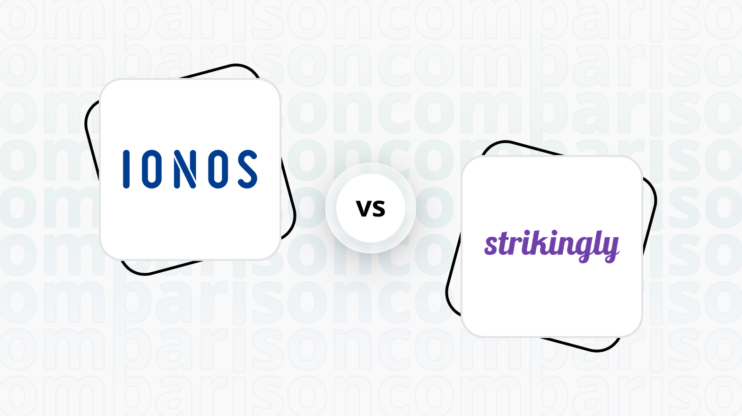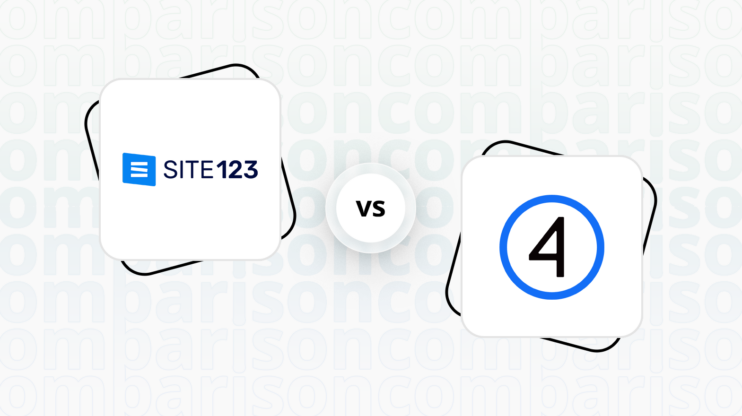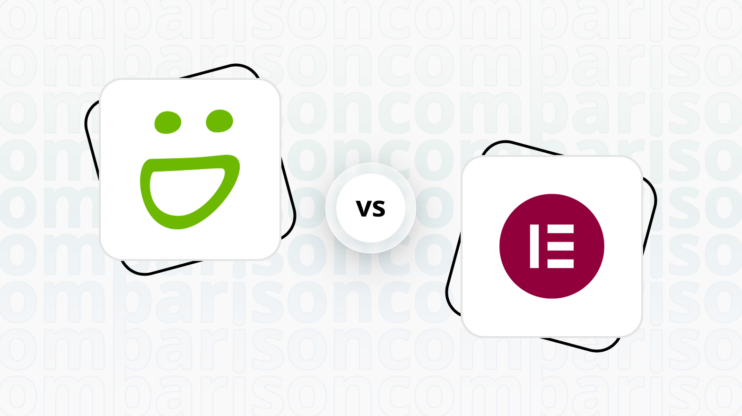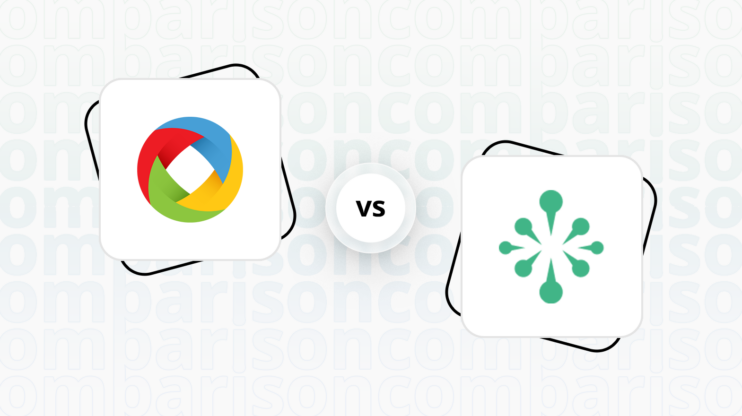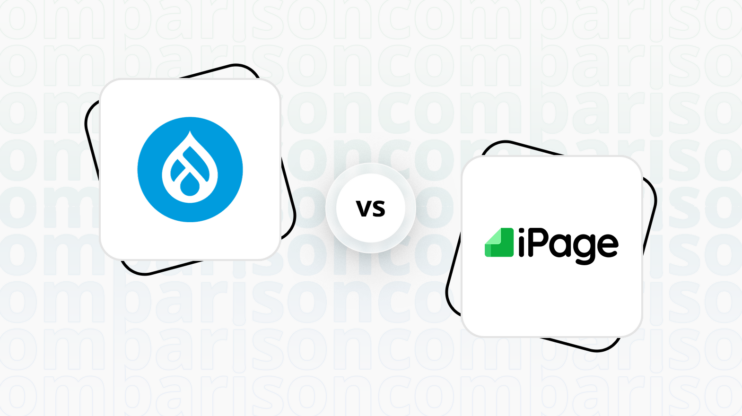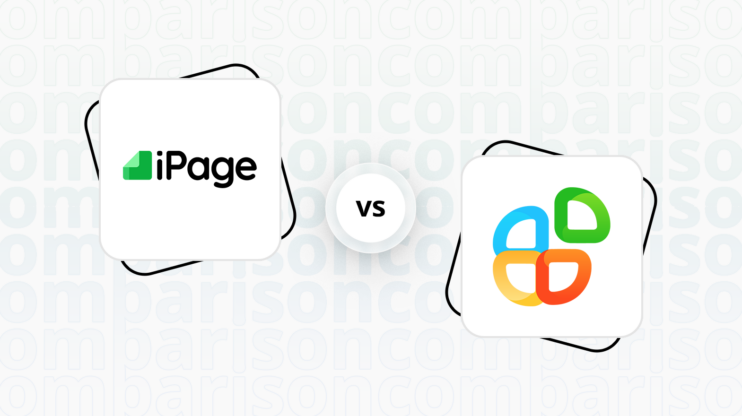Final verdict
Webflow and Zenfolio both offer unique strengths tailored to different user needs, but they cater to distinct audiences.
-
Webflow (Overall Grade: 7.9/10)
excels in providing a robust design experience with powerful tools and extensive customization options. It is ideal for professional designers and developers who seek a comprehensive solution for creating custom, responsive websites. Webflow’s advanced ecommerce features, superior hosting quality, and strong marketing tools make it a versatile platform for various online business needs. When comparing Webflow vs Zenfolio, Webflow stands out for its flexibility and scalability, though it may have a steeper learning curve for beginners. -
Zenfolio (Overall Grade: 6.4/10)
is specifically designed for professional photographers and visual artists, offering elegant templates and integrated ecommerce capabilities to showcase and sell their work online. It provides a user-friendly interface with specialized tools for photo management and client proofing. Considering Webflow vs Zenfolio, Zenfolio is the preferred choice for photographers seeking an affordable and straightforward platform to manage their online portfolios, despite its limitations in design flexibility and advanced customization.

|

|
|
|---|---|---|
|
Design functionalities & templates |
8.6 |
6.8 |
|
Ease of use |
7.5 |
6.3 |
|
Ecommerce |
8.5 |
6.3 |
|
Website Editors |
9.0 |
7.6 |
|
Product testing options |
6.3 |
8.4 |
|
Price |
8.0 |
8.2 |
|
Hosting quality |
8.9 |
5.7 |
|
Website speed optimization |
8.1 |
5.2 |
|
Plugins and integrations |
5.5 |
6.5 |
|
Marketing features |
7.8 |
6.1 |
|
Customer support |
8.3 |
6.7 |
|
Security |
7.8 |
8.0 |
|
AI capabilities |
8.3 |
2.4 |
|
User Management |
8.3 |
2.8 |
Best for ecommerce
 8.5
8.5
 6.3
6.3
Verdict
: Webflow is a versatile platform for various ecommerce needs, while Zenfolio is tailored specifically for photographers and visual artists.
-
Webflow
: Known for its powerful design tools and flexible CMS, Webflow is ideal for creating custom, responsive online stores. It offers extensive ecommerce features, including product management, payment processing, and marketing tools. When comparing Webflow vs Zenfolio, Webflow stands out for its broader ecommerce capabilities and customization options. -
Zenfolio
: Designed specifically for photographers, Zenfolio provides integrated ecommerce features to showcase and sell visual work. It offers customizable templates and tools for managing prints, digital downloads, and other products. However, it may not be as versatile as Webflow for general ecommerce needs.
Best for informational & business websites
 8.6
8.6
 6.9
6.9
Verdict
: Webflow is the superior choice for creating informational and business websites, offering advanced design capabilities and a robust CMS. Zenfolio, while excellent for photographers, lacks the versatility needed for broader business applications.
-
Webflow
: Scoring 8.6, Webflow excels in providing a comprehensive platform for building custom, responsive websites. Its powerful design tools and flexible CMS make it ideal for professional designers and businesses looking for a high degree of customization. Webflow’s intuitive visual interface and extensive learning resources further enhance its appeal for creating sophisticated informational sites. -
Zenfolio
: With a score of 6.9, Zenfolio is tailored specifically for photographers and visual artists. It offers elegant, mobile-friendly templates and integrated e-commerce capabilities, making it a great choice for showcasing and selling photography. However, its design flexibility and customization options are limited compared to Webflow, making it less suitable for broader business needs. When comparing Webflow vs Zenfolio, Zenfolio’s specialized focus on photography is its main strength, but it falls short for more diverse informational website requirements.
Detailed comparison
Design functionalities & templates
Design FunctionalitiesRepresents how well each platform allows for creative design and customization of websites.Score Components:
- Template Variety (30%): Range and quality of design templates.
- Customization (30%): Flexibility and options for design alterations.
- User Interface (20%): Ease and intuitiveness of the design process.
- Responsiveness (10%): Adaptability to different devices and screen sizes.
- Innovation (10%): Unique design features and tools.
 8.6
8.6
 6.8
6.8
🏆
Winner: Webflow.
If you’re looking for a platform that offers more creative control and a wide array of design features, Webflow is the preferred choice.
Webflow delivers a robust design experience with a diverse range of template and customization options. Boasting over 1000 pre-built templates covering various industries and website types, including free and premium options, Webflow ensures a constantly evolving library for users.
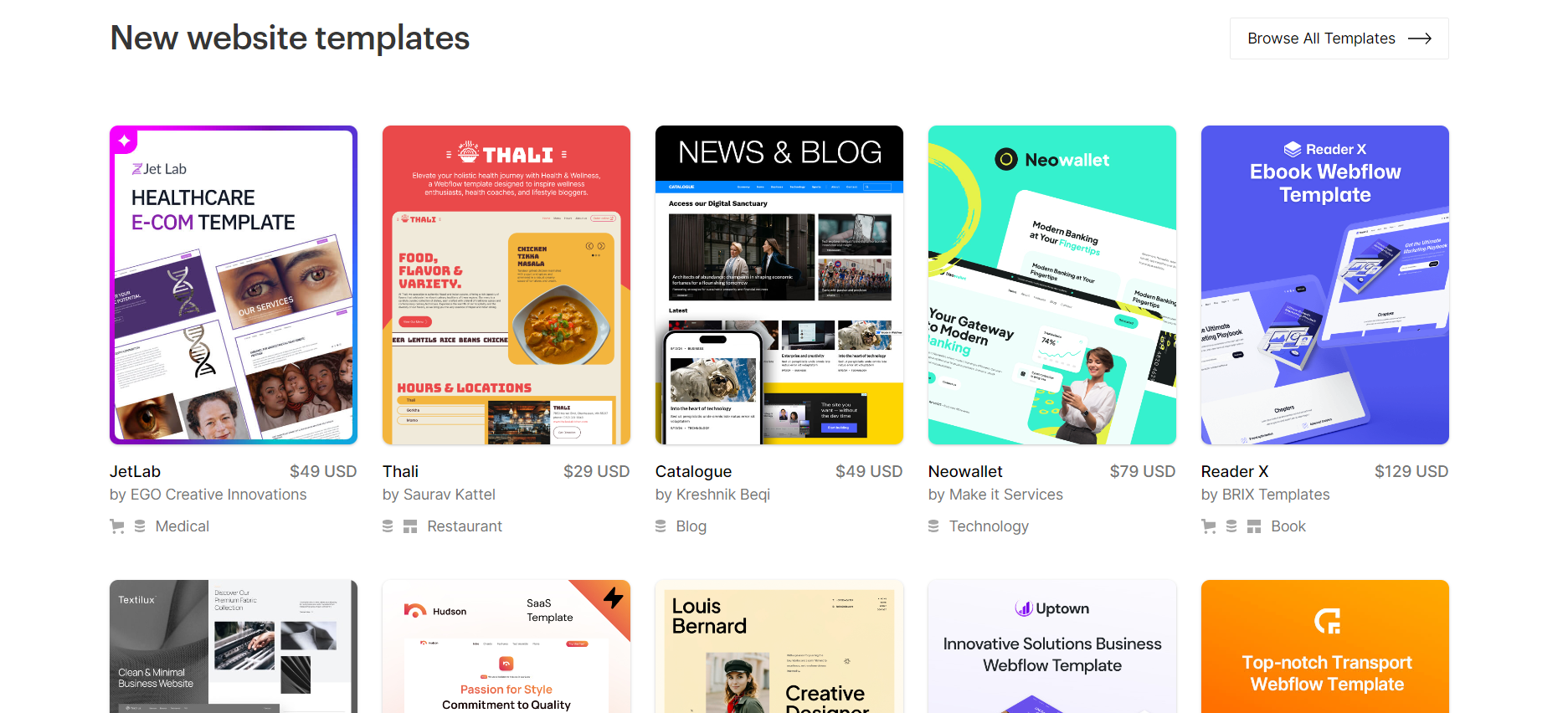
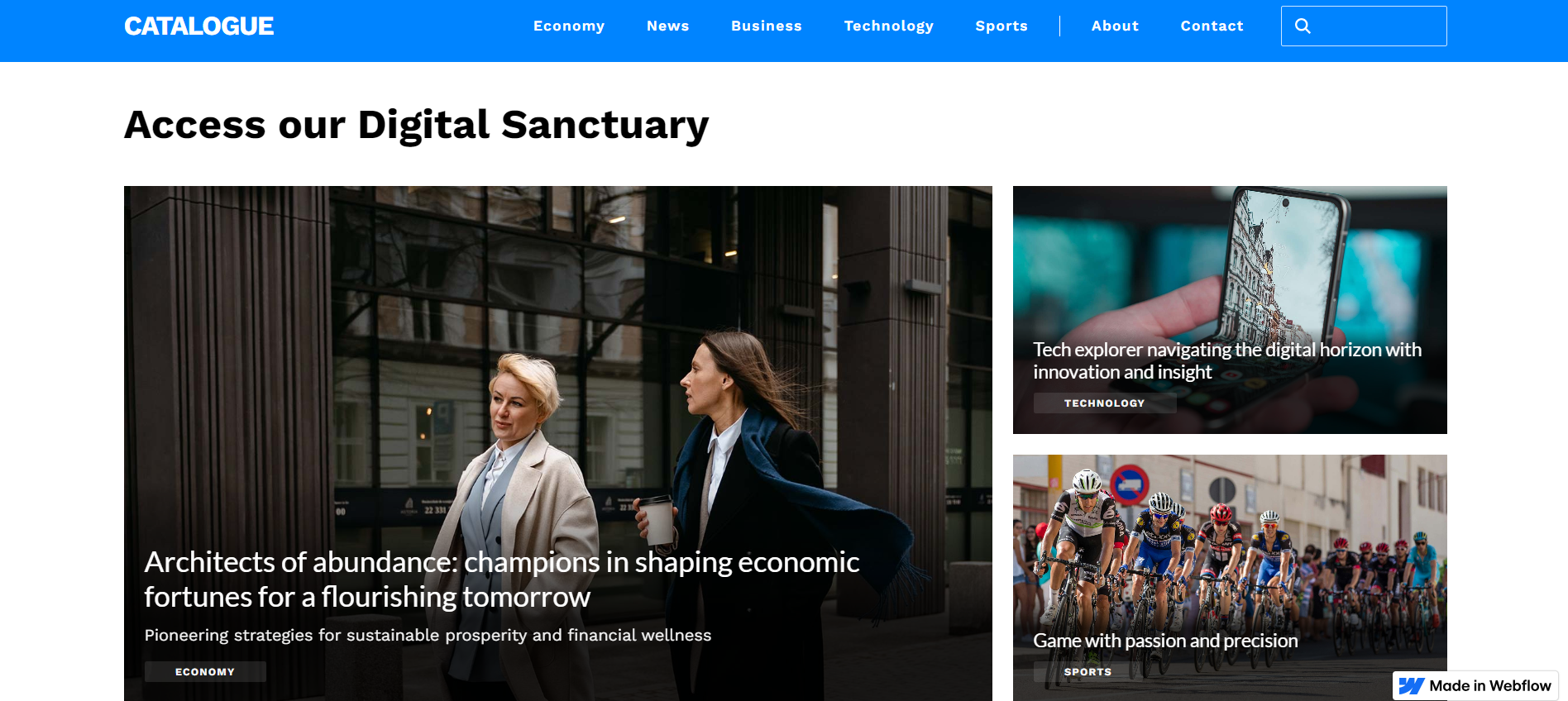
Compared to Webflow, Zenfolio offers a variety of customizable templates and features specifically tailored for photographers, with a focus on showcasing and selling their work. While it provides several customization options, including blocks for different layouts and styles, it may not offer as much versatility outside of photography-specific needs.
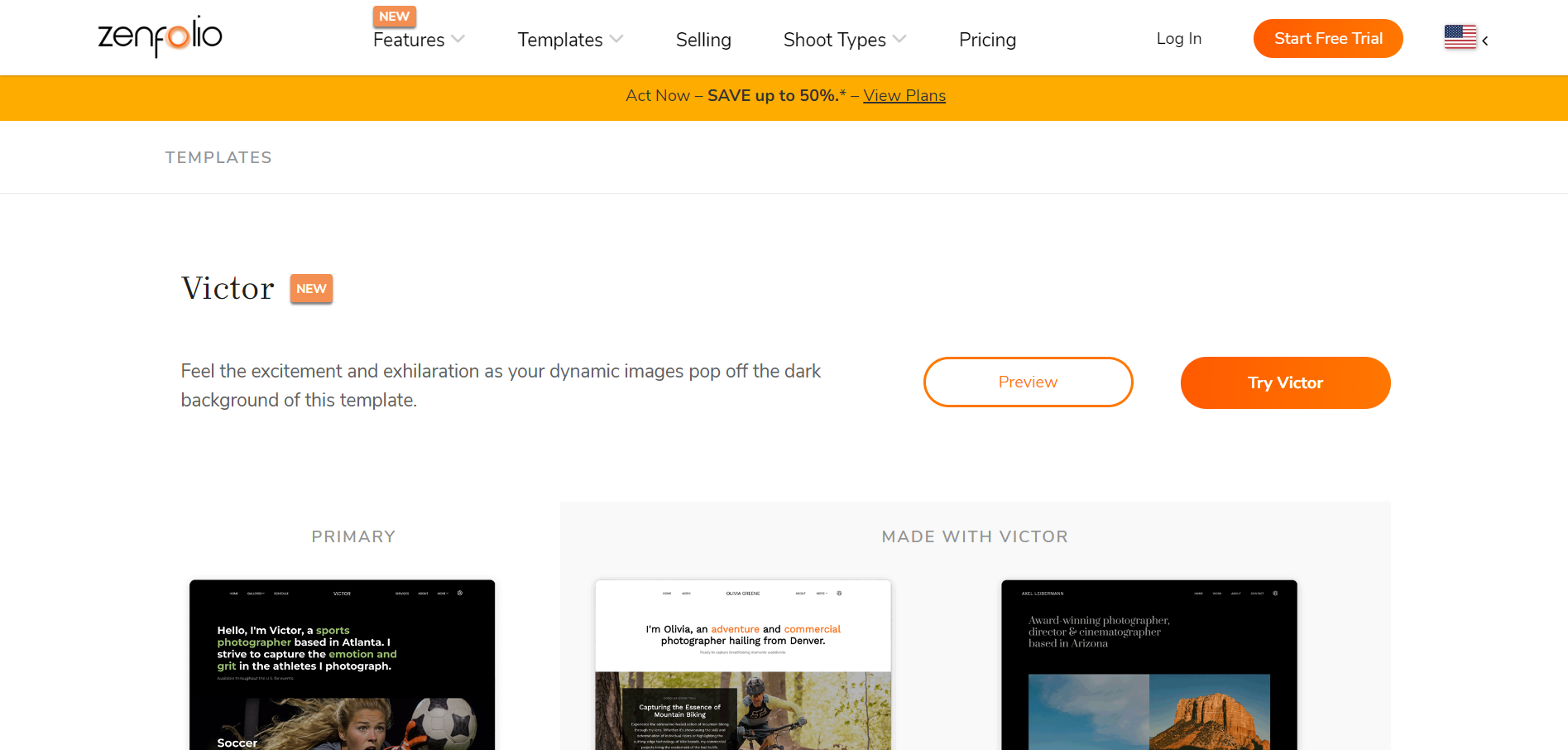
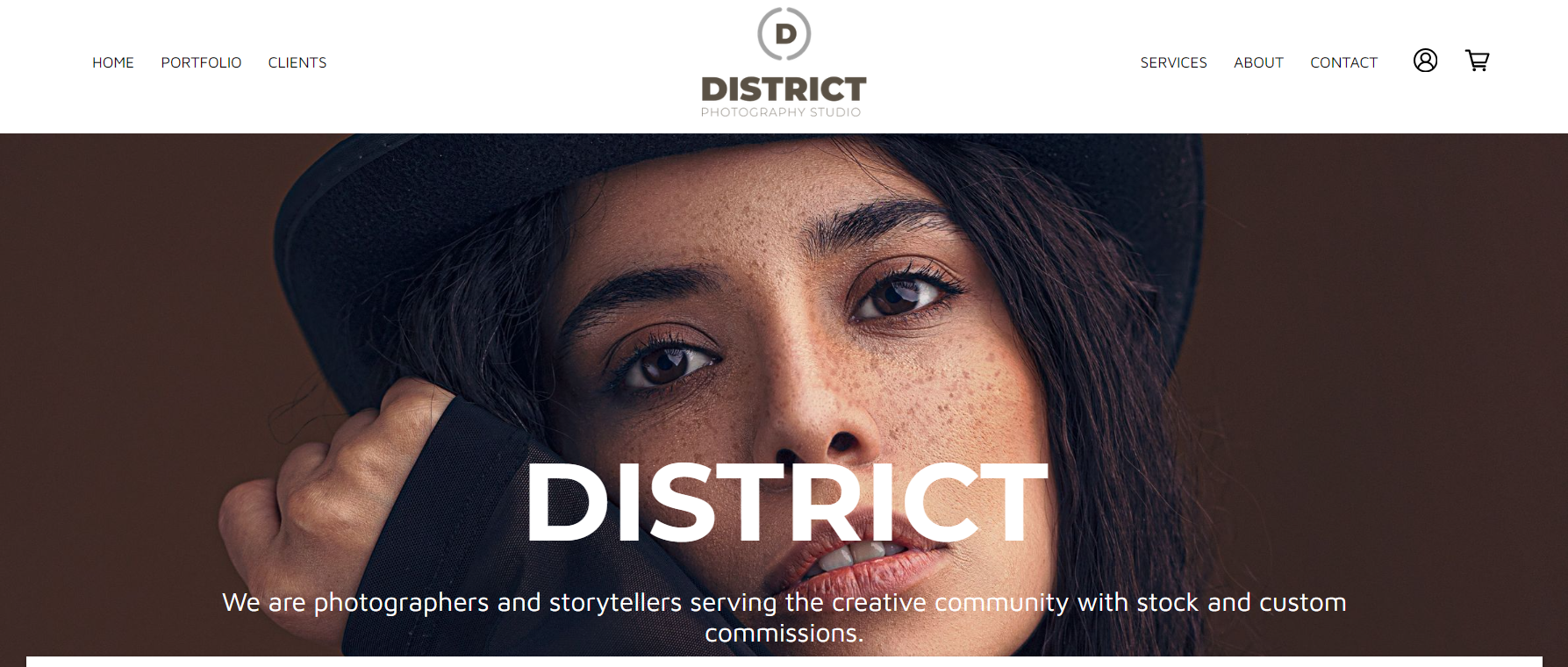
Get a head start on website creation with AI
Create a custom website tailored to your business needs 10X faster with 10Web AI Website Builder!
Ease of use
Ease of useReflects the platform’s overall user-friendliness.Score
Components:
- Learning curve (40%): Quickness and ease of getting started.
- Interface design (30%): Simplicity and intuitiveness of layout.
- User guidance (20%): Quality of tutorials and support.
- Flexibility (10%): Adaptability to various user skills.
 7.5
7.5
 6.3
6.3
🏆 Winner: Webflow
. Scoring 7.5, Webflow is user-friendly for experienced designers and developers, offering a visually intuitive interface with drag-and-drop features. Zenfolio, with a score of 6.3, offers a specialized platform for photographers, focusing on easy setup and customization for photo portfolios. However, it has limitations in design flexibility and might not fully cater to those seeking extensive customization.
Learning Resources
🏆 Winner: Webflow
. Webflow offers a comprehensive set of learning resources for individuals seeking proficiency in the platform. Zenfolio’s learning resources are somewhat limited and users have expressed a desire for more comprehensive learning resources.
For ecommerce
EcommerceMeasures the platform’s effectiveness in supporting online business activities.Score Components:
- Ecommerce themes and templates (20%): Variety and design of templates.
- Product management (25%): Ease of managing and organizing products.
- Payment options (25%): Variety and convenience of payment methods.
- Ecommerce features (20%): Features for managing an ecommerce store.
- Integration (10%): Compatibility with external e-commerce tools and services.
 8.5
8.5
 6.3
6.3
Webflow and Zenfolio cater to different niches within the ecommerce sector. Webflow is a robust platform for creating online stores, offering comprehensive ecommerce features such as easy store creation without coding, extensive customization options, product management with variations, inventory tracking, integration with major payment gateways, automated shipping calculations, tax configuration, and marketing tools like abandoned cart recovery and email marketing. Zenfolio, on the other hand, is designed specifically for professional photographers and visual artists to showcase, share, and sell their work online. It offers an integrated ecommerce platform for photographers, enabling the sale of prints, digital downloads, gifts, and other items directly from their online stores.

|

|
|
|---|---|---|
|
Ecommerce themes and templates |
7.5 |
7.0 |
|
Product page customization |
8.3 |
7.2 |
|
Payment processing and commissions |
7.8 |
6.5 |
|
POS capabilities |
6.5 |
3.0 |
|
Payment gateways |
8.0 |
6.8 |
|
Product numbers |
7.0 |
5.0 |
|
Additional ecommerce features |
7.9 |
6.5 |
Webflow ecommerce features:
- Checkout and Payment Processing with Stripe, PayPal, etc.
- Marketing and Promotions
- Tax and Shipping calculations
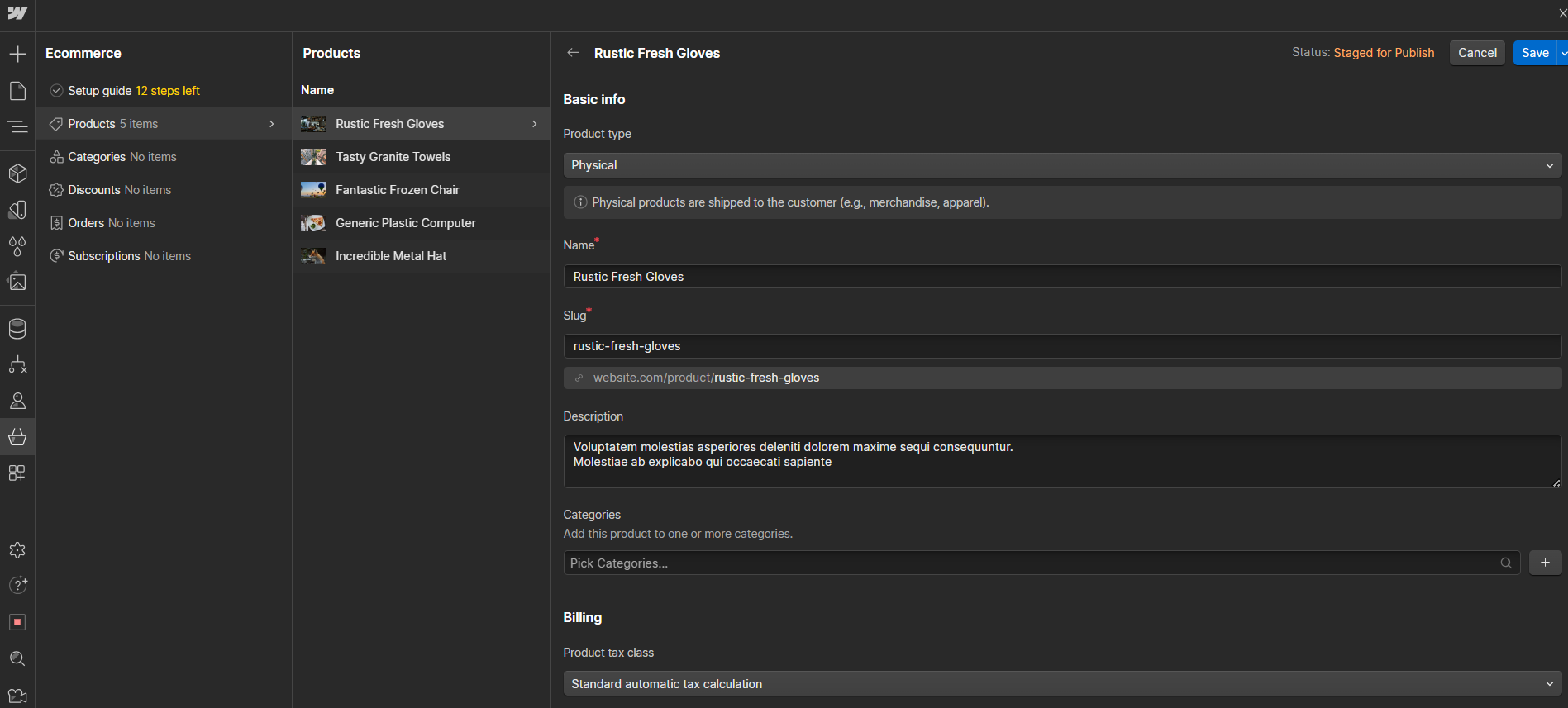
Zenfolio ecommerce features:
- Multiple Currency Support
- Discount Coupons
- Order management
- Gift Certificates
- Tax management
Ecommerce themes & templates
Webflow offers a diverse range of ecommerce themes and templates designed to cater to various types of online stores, from fashion and technology to artisan crafts and children’s products. Each template comes equipped with built-in ecommerce functionality, allowing you to easily add products and manage your store without the need for coding. Zenfolio provides customizable website templates with integrated e-commerce features for photographers, designed to showcase and sell their work across various genres. These templates include essential online selling tools such as secure payment options, product management, and marketing integrations.
Product page customization
Webflow offers extensive customization options for eCommerce product pages, allowing users to design and personalize their pages without coding. It provides tutorials for creating product pages from scratch, offers responsive templates for various devices, and allows users to add custom code and dynamic content using Webflow’s CMS for maximum customization flexibility. Zenfolio allows users to detail their product pages with descriptions, images, and options such as size or color. This allows for each product page to be adjusted to clearly display its unique attributes. Placing products in specific galleries or categories helps organize the site and improve navigation. The platform also supports customization in pricing and shipping settings, allowing sellers to cater to various needs effectively.
Payment processing
Webflow provides a flexible and secure platform for payment processing and ecommerce through integrations with leading payment gateways like Stripe and PayPal. This allows users to accept a wide range of payments, including credit card transactions directly from their websites. Zenfolio supports Stripe and PayPal for payment processing, integrating them seamlessly into its platform designed for photographers to sell their work online. The platform charges a commerce fee of 7% per order (excluding tax and shipping) and a payment processing fee for transactions through Stripe or PayPal. While Zenfolio offers robust e-commerce functionalities for online sales, including setting up price lists for prints and digital downloads, it does not explicitly mention POS capabilities for in-person sales, suggesting its services are tailored primarily towards online transactions.
Website Editors
Website EditorsEvaluates the platforms’ website building and editing capabilities.Score Components:
- Customization tools (40%): Range and power of editing features.
- Editor usability (30%): User experience within the editor.
- Design flexibility (20%): Freedom in layout and design changes.
- Update and maintenance ease (10%): Simplicity of updating and maintaining the site.
 9.0
9.0
 7.6
7.6
🏆
Winner: Webflow
. With a score of 9.0, Webflow’s editor is praised for its intuitive visual interface that simplifies the process of designing and editing responsive websites without requiring deep technical knowledge. It offers a perfect blend of ease of use for beginners and the flexibility for more advanced users, enabling significant cost savings by allowing users to customize and manage their sites without hiring professionals.
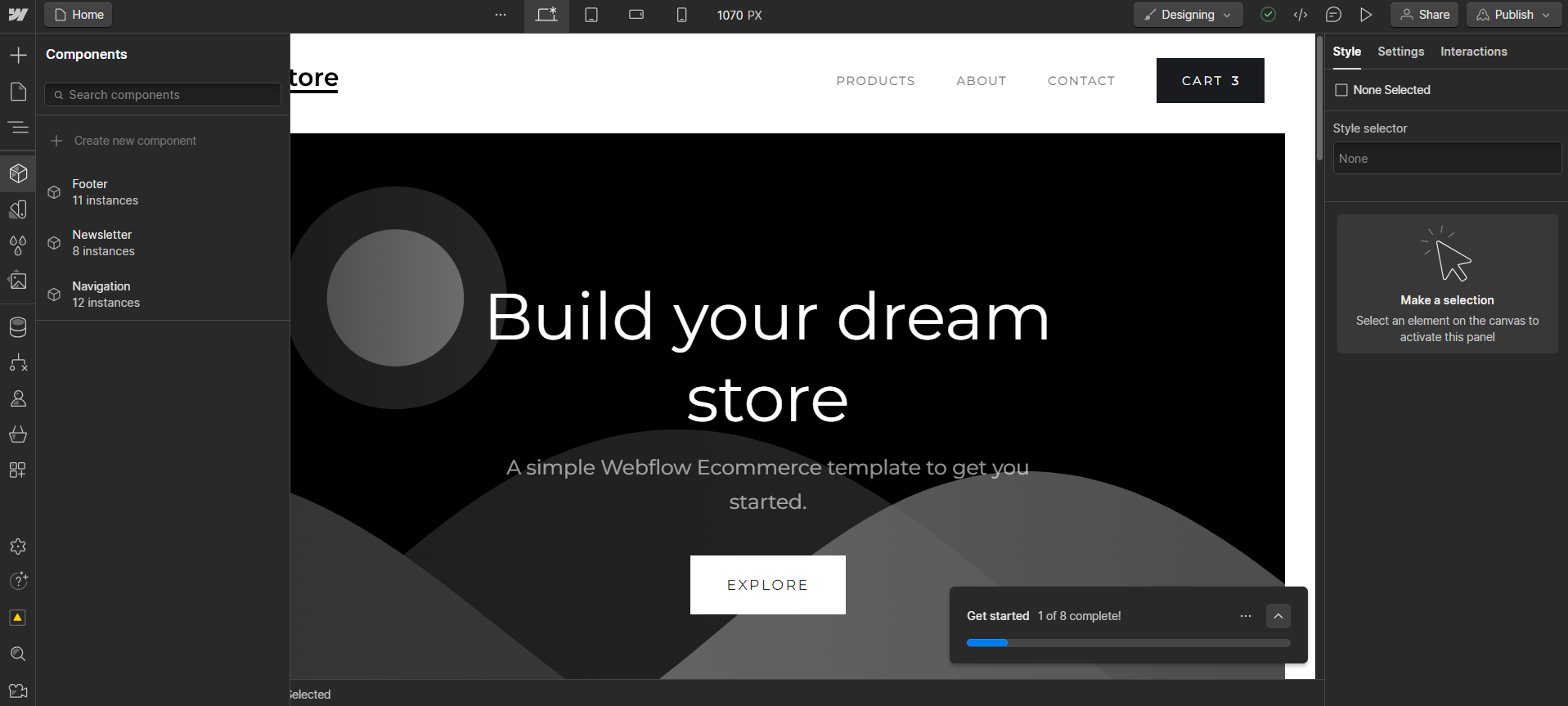
Zenfolio’s editor, scoring 7.6, is well-regarded for its ease of use, particularly for beginners and photographers looking to create online portfolios. It provides integrated galleries and a selection of tools tailored to photographers, facilitating photo organization and showcasing. However, it does have limitations in terms of customization options and photo storage capacity, which could be a drawback for some users.
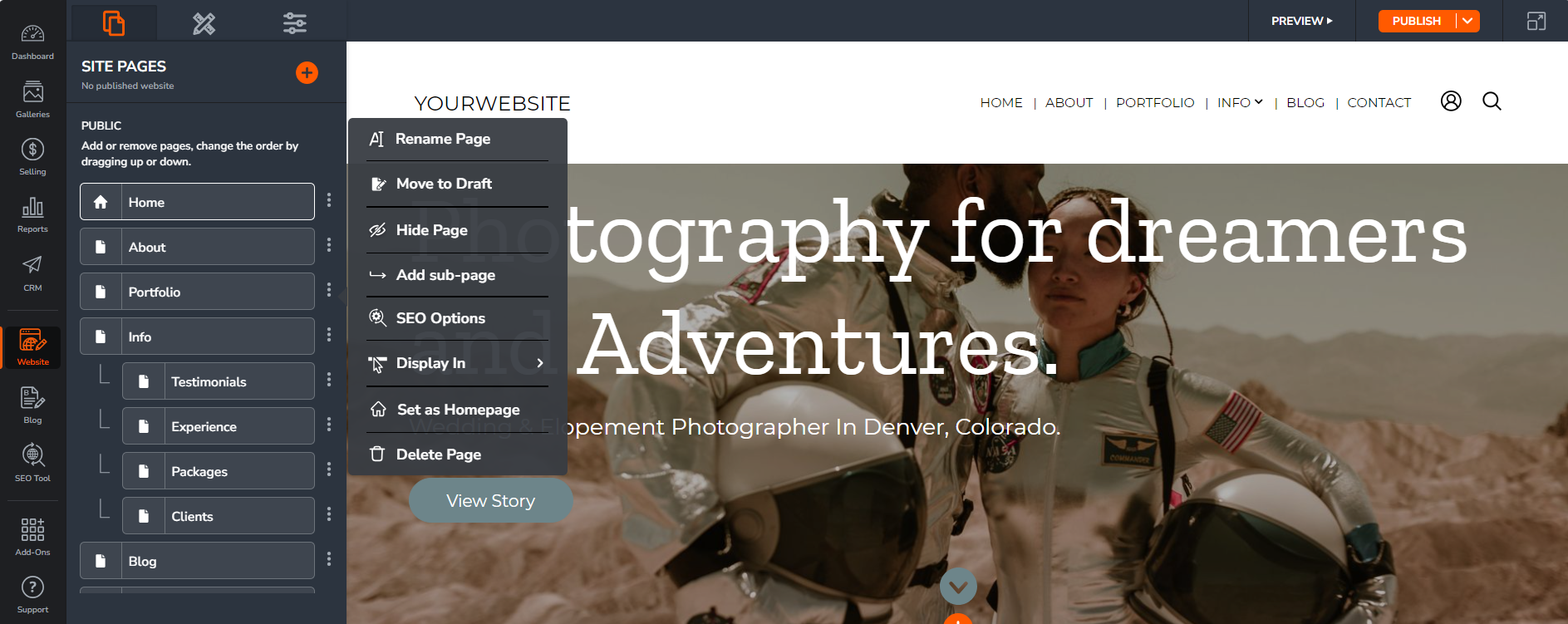
Mobile editor/app
 7.0
7.0
 8.5
8.5
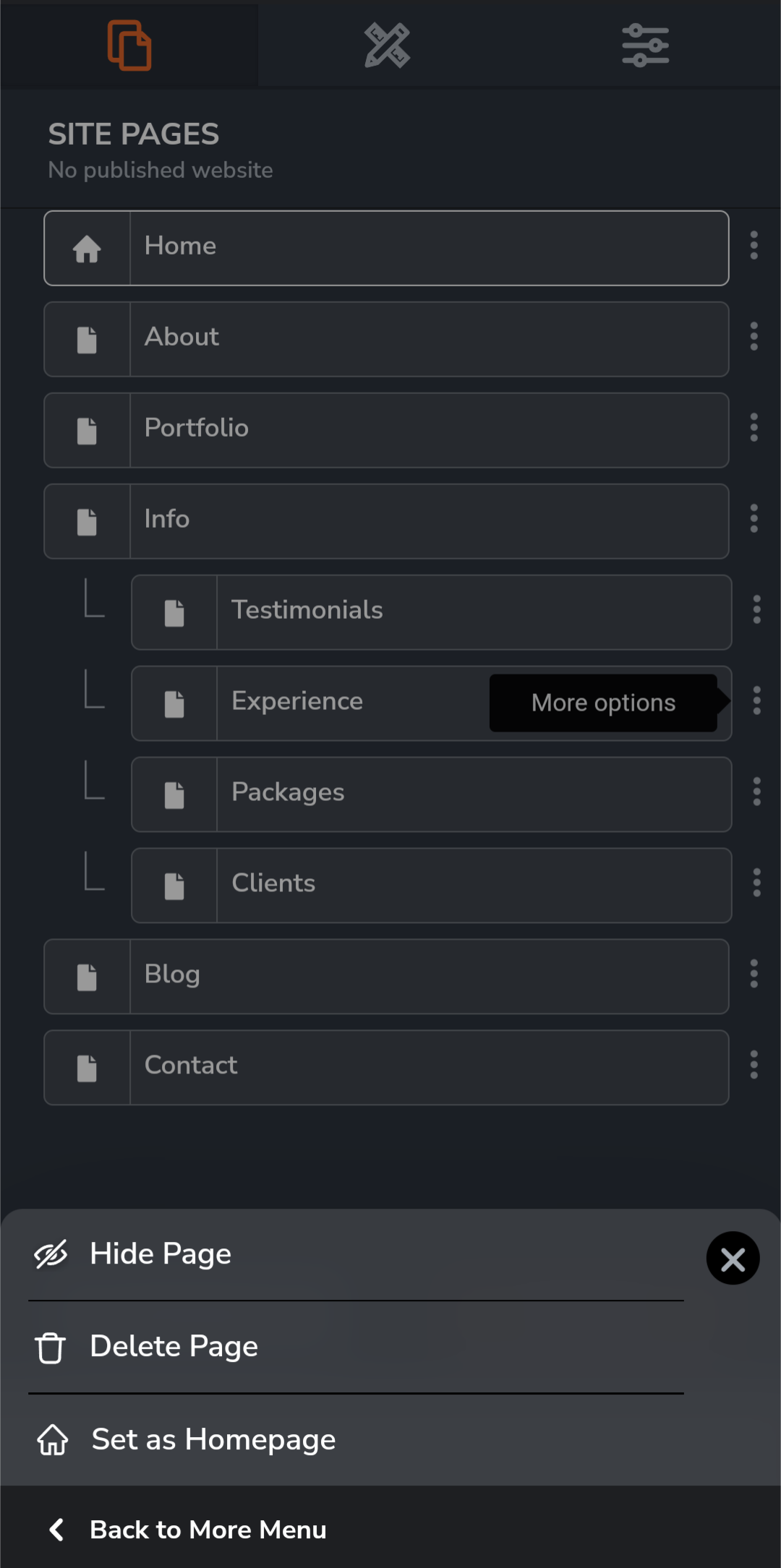
🏆
Winner: Zenfolio
. Both Webflow and Zenfolio offer mobile solutions for managing your website, but they cater to different needs and skill levels.
Webflow does not have an official mobile editor app itself, there is a third-party app called EditFlow, created by a community member for Webflow users. Currently the app is only available for iOS. This may limit the accessibility and functionality for some users, especially those using Android devices.
On the other hand, Zenfolio provides a comprehensive mobile editor app designed for Zenfolio account holders to manage their websites and galleries directly from their mobile devices. It includes features for receiving notifications, managing galleries, handling sales-related tasks, and showcasing photos through a client presentation mode. Additionally, the app supports uploading and editing photos, as well as accessing various tools for reports, CRM, bookings, and blog management, although some features may still necessitate desktop use for full functionality.
In summary, Zenfolio receives a higher rating due to its comprehensive mobile app and wide range of features, while Webflow’s reliance on a third-party app may limit its accessibility and functionality for some users.
Product testing options
Product Testing OptionsAssesses the options for trying out platform features before commitment.Score Components:
- Trial quality (40%): Extent and usefulness of the trial or free version.
- Feature accessibility (30%): How many features are available to test.
- Trial duration (20%): Length of the trial period.
- Ease of transition (10%): Smoothness of moving from trial to paid plans.
 6.3
6.3
 8.4
8.4
Overall Result
:
Zenfolio Wins
. Zenfolio scores 8.4 in product testing options, outperforming Webflow which scores 6.3. Zenfolio offers a 14-day free trial during which users can test premium features. It also provides a 30-day money-back guarantee. On the other hand, Webflow offers a free plan with basic features but does not provide a trial version or a money-back guarantee.

|

|
|
|---|---|---|
|
Free Plan |
Yes |
No |
|
Trial Duration |
No |
14 days |
|
Testing Premium Features |
Basic features with free plan |
During the free trial |
|
Money Back Guarantee |
No |
30-day money back guarantee |
Price
PriceLooks at the cost-effectiveness and value for money of each platform.Score Components:
- Plan value (40%): What each pricing tier offers.
- Transparency and clarity (30%): Clearness of pricing structures.
- Flexibility of plans (20%): Range of options to suit different budgets.
- Hidden costs (10%): Additional expenses not included in the plan.
 8.0
8.0
 8.2
8.2
Webflow and Zenfolio have similar pricing scores, but Zenfolio’s plans are generally more affordable. However, Webflow offers more advanced features and customization options, especially for larger businesses.

|

|
|
|---|---|---|
|
Free |
Starter (Free): Limited features for new sites, including 2 static pages and 50 form submissions lifetime. |
No offering at this amount. |
|
$0-$10 |
No offering at this amount. |
Portfolio ($9.00/month): Basic entry-level with 15 GB photo storage, HD video, single-page website. Value for price: 6.0 |
|
$10-$20 |
Basic ($18/month): Suitable for simple sites with a custom domain, including basic SEO controls and 500 monthly form submissions. And 100 pages. Value for price: 6.5 |
No offering at this amount. |
|
$20-$30 |
CMS ($29/month): For content-driven sites with 2,000 CMS items, 1,000 monthly form submissions, and full API access. And 150 website pages. Value for price: 7.5 |
PortfolioPlus ($23.00/month): Balanced features with 150 GB photo storage, HD video, single-page website. Value for price: 7.5 |
|
$40-$45 |
Standard ($42/month): For new businesses with up to 500 ecommerce items, includes basic ecommerce features, and 2% transaction fee Value for price: 8.5 |
ProSuite ($40.00/month): Extensive features for photo and video, multi-page websites, blog, templates, and more. Value for Price: 9.0 |
|
$45-$50 |
Business ($49/month): High traffic capacity, advanced features like site search, and up to 10 content editors. Value for price: 8.0 |
No offering at this amount. |
|
$80-$90 |
Plus ($84/month): Higher volume businesses with 0% transaction fees, up to 5,000 ecommerce items, and advanced features. Value for price: 9.0 |
No offering at this amount. |
|
$200+ |
Advanced ($235/month): Scalable solution for large online stores with up to 15,000 ecommerce items and the highest caps and 0% transaction fees. Value for price: 9.5 |
No offering at this amount. |
location. As a result in rare cases the prices displayed here can differ from the ones you see on their
websites.
Hosting quality
Hosting
qualityExamines the reliability and performance of the hosting solutions.Score Components:
- Uptime (40%): Consistency and reliability of website availability.
- Speed (30%): Loading times and performance.
- Bandwidth and storage (20%): Sufficiency of resources provided.
- Data centers (10%): Quality and distribution of hosting infrastructure.
 8.9
8.9
 5.7
5.7
Winner: Webflow
. Webflow offers managed hosting with a 99.99% uptime, and it leverages a globally distributed network of data centers from Amazon Web Services (AWS) and Fastly. Zenfolio, on the other hand, offers cloud hosting but does not disclose any information about its uptime statistics or the locations of its data centers. This lack of transparency gives Webflow the edge in this category.

|

|
|
|---|---|---|
|
Do they offer hosting? |
Yes, included in all paid plans |
Yes, included in all paid plans |
|
Data Centers: |
Webflow doesn’t actually have its own data centers. Instead, it relies on a globally distributed network of data centers from Amazon Web Services (AWS) and Fastly |
Zenfolio does not disclose the locations of its data centers |
|
Type of hosting: |
Managed Hosting |
Cloud Hosting |
|
Uptime: |
99.99% |
Zenfolio website builder does not disclose any information about its uptime statistics |
|
Uptime Guarantee: |
Only Enterprise plan, 99.99% |
Zenfolio does not have an uptime guarantee |
Website Speed Optimization
Website Speed OptimizationEvaluates optimization of website loading timesScore Components:
- PageSpeed Score (30%): Google’s score indicating performance optimization.
- Loading Time (30%): The average time until a website is fully interactive.
- Mobile Optimization (15%): Optimization effectiveness for mobile devices.
- Resource Optimization (15%): Optimizing images, scripts, and other heavy resources.
- CDN Usage (10%): Use of CDN to enhance speed across geolocations.
 8.1
8.1
 5.2
5.2
🏆 Winner: Webflow
Both Webflow and Zenfolio prioritize website performance and page speed, but Webflow provides more detailed information about its optimization strategies and Core Web Vital improvements, giving it an edge over Zenfolio.

|

|
|
|---|---|---|
|
Focus |
Custom Cache Settings, Custom Element Lazy Loading, Automatic Minification, Responsive templates, CDN |
Mobile responsive design |
|
Performance Tools |
Google Lighthouse, PageSpeed Insights |
Google PageSpeed Insights |
|
Key Strategies |
Custom Cache Settings, Custom Element Lazy Loading, Automatic Minification, Responsive templates, CDN |
Mobile responsive design |
|
Load Times |
Below 2 seconds average |
Varies depending on optimization and website complexity |
|
Page Speed Scores Range |
77.2/100 |
Varies depending on optimization and website complexity |
|
Core Web Vitals Improvement |
Improving components’ usability, and emphasis on LCP, FID and CLS |
No information provided |
Webflow’s approach to enhancing site speed includes custom cache settings, custom element lazy loading, automatic minification, responsive templates, and a content delivery network (CDN). It also places a strong emphasis on improving components’ usability and Core Web Vitals, including Largest Contentful Paint (LCP), First Input Delay (FID), and Cumulative Layout Shift (CLS). Webflow’s load times are below 2 seconds on average, and its PageSpeed score is 77.2/100.
Zenfolio, on the other hand, focuses on mobile responsive design for speed optimization. However, it does not provide any information on their Core Web Vitals improvements. Zenfolio’s load times and PageSpeed scores vary depending on optimization and website complexity.
Get a head start on website creation with AI
Create a custom website tailored to your business needs 10X faster with 10Web AI Website Builder!
Plugins and integrations
Plugins and integrationsMeasures the range and effectiveness of additional plugins and integrations.Score Components:
- Variety of options (40%): Range of available add-ons.
- Integration smoothness (30%): Ease of integrating plugins into the site.
- Quality of plugins (20%): Functionality and reliability of the options.
- Custom integration capabilities (10%): Support for custom or third-party integrations.
 5.5
5.5
 6.5
6.5
🏆 Winner: Zenfolio.
Zenfolio, with a score of 6.5, offers a focused set of plugins and integrations specifically designed for photographers. These features enhance the functionality of Zenfolio websites by facilitating content integration from external sources, streamlining photo management workflows, and allowing for customized user interactions. Webflow, scoring 5.5, doesn’t have plugins or extensions in the traditional sense. Instead, it offers a built-in library of website elements and functionalities and integrates with a number of third-party services and tools. However, Zenfolio’s specialized and focused approach gives it the edge in this category.
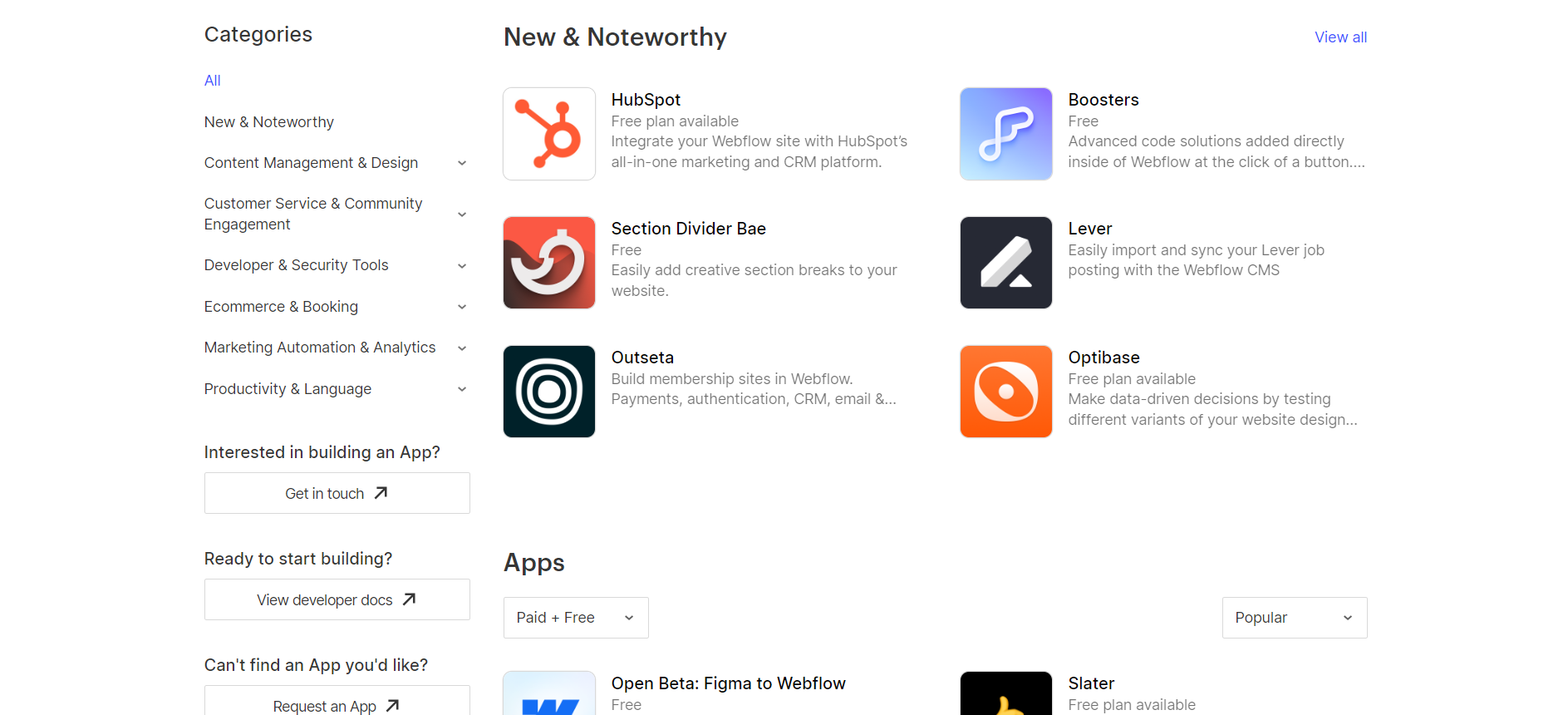
Marketing Features
Design FunctionalitiesRepresents how well each platform allows for creative design and customization of websites.Score Components:
- Template Variety (30%): Range and quality of design templates.
- Customization (30%): Flexibility and options for design alterations.
- User Interface (20%): Ease and intuitiveness of the design process.
- Responsiveness (10%): Adaptability to different devices and screen sizes.
- Innovation (10%): Unique design features and tools.
 7.8
7.8
 6.1
6.1
🏆
Overall Winner: Webflow
. Webflow stands out for its comprehensive marketing tools, especially in SEO, analytics, and ad campaign management. Zenfolio, while strong in social media integration and email marketing, falls short in advanced SEO and analytics capabilities.

|

|
|
|---|---|---|
|
SEO Tools |
|
✓ (Limited) |
|
Email Marketing |
|
|
|
Blogging |
|
✓ (On higher plans) |
|
Social Media Integration |
Simplifies content sharing and audience engagement |
Enables sharing of websites via major social platforms |
|
Analytics and Reporting |
Integrates with Google Analytics |
Basic built-in analytics tools |
|
Ads and Promotions |
Supports ad and promotion management |
Creation of custom discount coupons |
Customer Support
Customer supportEvaluates the quality and availability of support options.Score Components:
- Response time (40%): Speed of support responses.
- Support quality (30%): Effectiveness and helpfulness of the support.
- Availability (20%): Range of support channels (phone, chat, email).
- Resource richness (10%): Quality of self-help and educational materials.
 8.3
8.3
 6.7
6.7
🏆 Winner: Webflow
. In the Webflow vs Zenfolio comparison, Webflow takes the lead with its 24/7 customer support through live chat, email, and a community forum. Webflow also offers extensive documentation and video tutorials, making it easier for users to find solutions to their problems. For enterprise users, Webflow provides a dedicated Customer Success Manager and priority support, ensuring that large organizations receive the assistance they need.
Zenfolio, on the other hand, offers customer support through email 365 days a year, LiveChat from Monday to Thursday, and phone support for Advanced plan subscribers. While Zenfolio provides a rich Support Center with self-help resources, its limited live support hours and lack of enterprise-specific support make it less competitive compared to Webflow.
Security
SecurityLooks at the platforms’ security measures and data protection.Score Components:
- Data protection (40%): Safeguards for user and customer data.
- SSL and encryption (30%): Implementation of secure connections.
- Compliance (20%): Adherence to industry security standards.
- Regular updates (10%): Frequency of security updates and patches.
 7.8
7.8
 8.0
8.0
🏆
Winner: Zenfolio
. Zenfolio edges out Webflow with a slightly higher security score and a comprehensive approach to data protection and website security. Zenfolio’s security features are tailored to the needs of photographers and visual artists, offering SSL encryption, watermarking, password-protected galleries, and cloud backup.
Webflow also provides robust security measures, including SSL encryption, regular security audits, and two-factor authentication. However, Zenfolio’s specialized features for protecting users’ work and its slightly higher security score give it the edge in this category.
AI Capabilities
AI capabilitiesMeasures the effectiveness of AI-driven features and tools.Score Components:
- Automation efficiency (40%): Impact of AI on streamlining processes.
- Personalization (30%): AI-driven customization for users or customers.
- AI-Assisted design (20%): Role of AI in website design and functionality.
- Data analysis (10%): Use of AI in interpreting user data and analytics.
 8.3
8.3
 2.4
2.4

|

|
|
|---|---|---|
|
AI Builder |
In development |
Not available |
|
AI Ecommerce features |
Not available |
PhotoRefine.ai for efficient photo management |
|
AI content generation |
In development |
Not available |
|
Additional AI features |
Smart suggestions for design elements and layouts |
Not available |
🏆 Winner: Webflow
. Despite not having an AI builder yet, Webflow has a higher AI capabilities score of 8.3 and has announced plans to introduce AI features to improve the visual development learning journey, create and iterate designs faster with an AI copilot, and offer AI-customized templates for quicker website creation. Zenfolio, on the other hand, does not have an AI website builder and has a lower AI capabilities score of 2.4. However, it does offer AI-driven eCommerce features aimed at enhancing the online selling experience for photographers.
User Management
User ManagementAssesses the platforms’ capabilities in managing user roles, permissions, and accessibility.Score Components:
- Role Customization (40%): Flexibility in creating and defining user roles and
permissions. - Ease of Management (30%): User interface and tools for managing users.
- Access Control (20%): Effectiveness of access control measures for different user
levels. - Scalability (10%): Ability to manage a growing number of users efficiently.
 8.3
8.3
 2.8
2.8
🏆 Winner: Webflow
. Webflow and Zenfolio have different approaches to user management.
- Webflow offers a variety of user roles with different access levels, making it suitable for collaborative work. The number of users who can edit a website and their access levels vary by plan. Core, Growth, and Enterprise plans offer unlimited editors, while others limit content editors to 3 or 10 per site. Access levels include Designer for full access and Editor for content editing. Workspace roles like Admin, Designer, and Editor ensure collaboration and security through features like the Site Activity Log and role-based permissions.
- Zenfolio, on the other hand, only allows one user to edit and manage a website, which may limit its usability for larger teams or projects requiring collaboration.
Webflow User Roles and Access Levels:
| Role | Description | Access Highlights |
|---|---|---|
| Workspace Owner | Full control over Workspace settings and member management. | Edit settings, manage billing, access/edit all sites, invite/remove members, manage permissions. |
| Workspace Admin | Similar to the owner with some restrictions. | Edit settings, manage billing, access/edit all sites, invite/remove members (except owner), manage permissions. |
| Workspace Member | Limited control focused on site interaction. | Download invoices, access/edit sites, invite members. |
| Workspace Guest | Temporary collaborators with limited access. | Access/edit sites. |
| Workspace Commenter | Limited to commenting for feedback on sites. | Create/view/resolve comments, preview sites. |
| Site Admin | Full control at the site level. | Manage permissions, delete/transfer sites, billing management, design and publish changes. |
| Can Design | Design capabilities with some restrictions on publishing. | Design in Designer, create/modify classes and components, publish changes with permission. |
| Can Design (Limited) | Restricted design capabilities for Enterprise customers. | Create new classes, modify created classes, limited publishing capabilities. |
| Can Edit | Content editing without full design privileges. | Edit text/links/images, manage assets, publish Collection items and Ecommerce products. |
| Can Comment (Site Level) | Commenting for feedback at the site level. | Create/view/resolve comments, preview sites. |
Zenfolio User Roles and Access Levels:
Zenfolio does not provide different user roles and access levels. It only allows one user to edit and manage a website.
Additional Features

|

|
|
|---|---|---|
|
SSL Certificate |
|
|
|
Custom Domain |
|
|
|
Free Custom Domain Included |
|
|
|
International Domains |
|
|
|
Mobile Responsive |
|
|
|
Page Speed |
|
|
|
Website Builder Mobile App |
|
|
|
Convert a Website To An App |
|
|
|
Website Analytics |
|
|
|
Multilingual Sites |
|
|
|
Multiple Users |
|
|
User Feedback
Webflow receives high praise for its user-friendly interface, eliminating the need for coding while offering extensive design flexibility. Users appreciate its scalability, cost-effectiveness, and seamless integration of essential features like forms and CMS. However, some users note a slight learning curve and occasional limitations, particularly in ecommerce functionalities and content management. Overall, Webflow proves to be a powerful tool for building and managing websites, offering robust features for both beginners and experienced developers, albeit with some room for improvement in certain areas like collaborative editing and content management.
Users appreciate Zenfolio for its elegant and affordable site/portfolio designs, highlighting the platform’s suitability for photographers looking to showcase and sell their work online. The Starter plan is praised for its value, though some users express a desire to upgrade to the Pro plan for its enhanced client interaction features and customizable marketing tools. Criticisms include dissatisfaction with the platform’s handling of photo albums and a desire for more privacy and faster loading times. Overall, Zenfolio is valued for its ability to organize and share professional photographs and files, despite some navigational and performance issues.
The making of this blog
We followed a clear, step-by-step process to write and research this article.
FAQ
Which platform is better for professional designers, Webflow or Zenfolio?
Can Zenfolio be used for non-photography websites effectively?
How do Webflow and Zenfolio compare in terms of ecommerce capabilities?
Which platform offers better customer support, Webflow or Zenfolio?
Are there any significant differences in hosting quality between Webflow and Zenfolio?
Which platform is more user-friendly for beginners?
Can I manage multiple users and collaborators on both platforms?
How do Webflow and Zenfolio handle website speed optimization?
Which platform is better for selling photography online?
Do Webflow and Zenfolio offer AI capabilities?










